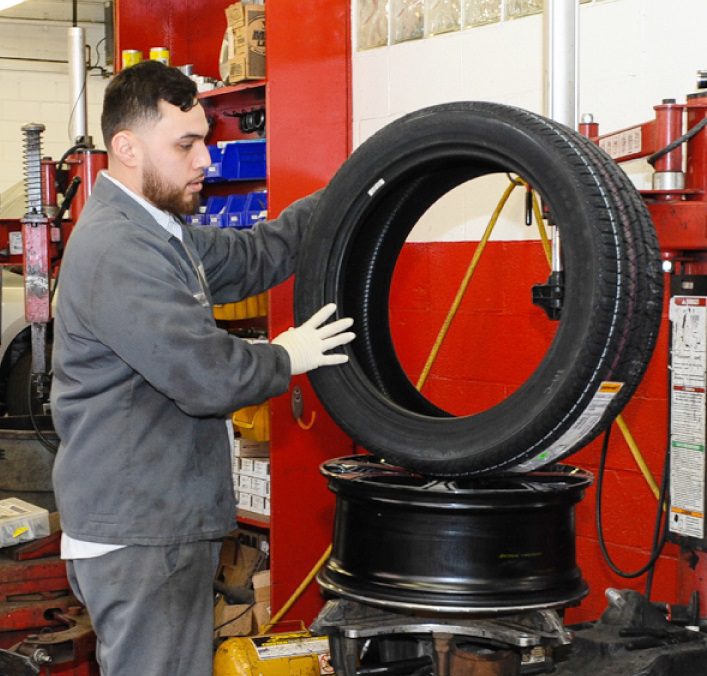Your tires wear out differently depending on how you drive. Your front tires likely carry most of your car’s weight, which causes them to wear down faster than the rear ones. Left and right turns tend to wear the front tires at different rates as well. For example, studies show that drivers generally take their left turns faster than they do their rights. This tends to put more load on the front right tire which in turn makes that one specific tire wear out more easily than the rest. After thousands of miles of driving, uneven tire wear is bound to happen. When we rotate our vehicle’s tires from one position to another, we equalize their natural wear patterns, extending the life of our tires. Tire rotation helps give you a smoother, safer ride and saves you money in the long run
Car Jack

- You might use the jack that came with your car for this job, but it is not recommended.
- It’s designed to lift your car only long enough for a quick tire change.
- The safer route is to use a hydraulic floor jack.
- A good car jack delivers the lift you need, wherever and whenever you need it.
- Check out our wide assortment of car jacks and lifting tools to find what you need to get the job done

Jack Stands

- After you get your car up, you’ll need jack stands to rest the car on top of while you switch out the tires.
- We have a variety of jack stands to fit every vehicle weight and size.
Directional Tires

- Directional tires have a one-way tread pattern optimized for the direction the tires rotate on the car – they’re specifically made for either the left or right side.
- You’ll notice little arrows or triangles on the sidewall indicating which way the tire is supposed to turn.
- To rotate directional tires, swap the front right tire with the back right tire and the front left tire with the back left tire.
- See image for reference.
Non-Directional Tires

- The tread pattern on non-directional tires is designed so that they can be mounted on any wheel.
- To rotate non-directional tires, use the cross pattern.
- For cars with rear-wheel drive, move the front tires to the opposite sides of the rear: left-front to right-rear and right-front to left-rear.
- The rear tires are moved straight forward. Here’s how it looks visually:
- *On vehicles with front-wheel drive, do the opposite.
- Move the rear tires to the opposite sides of the front and move the front tires straight back.






